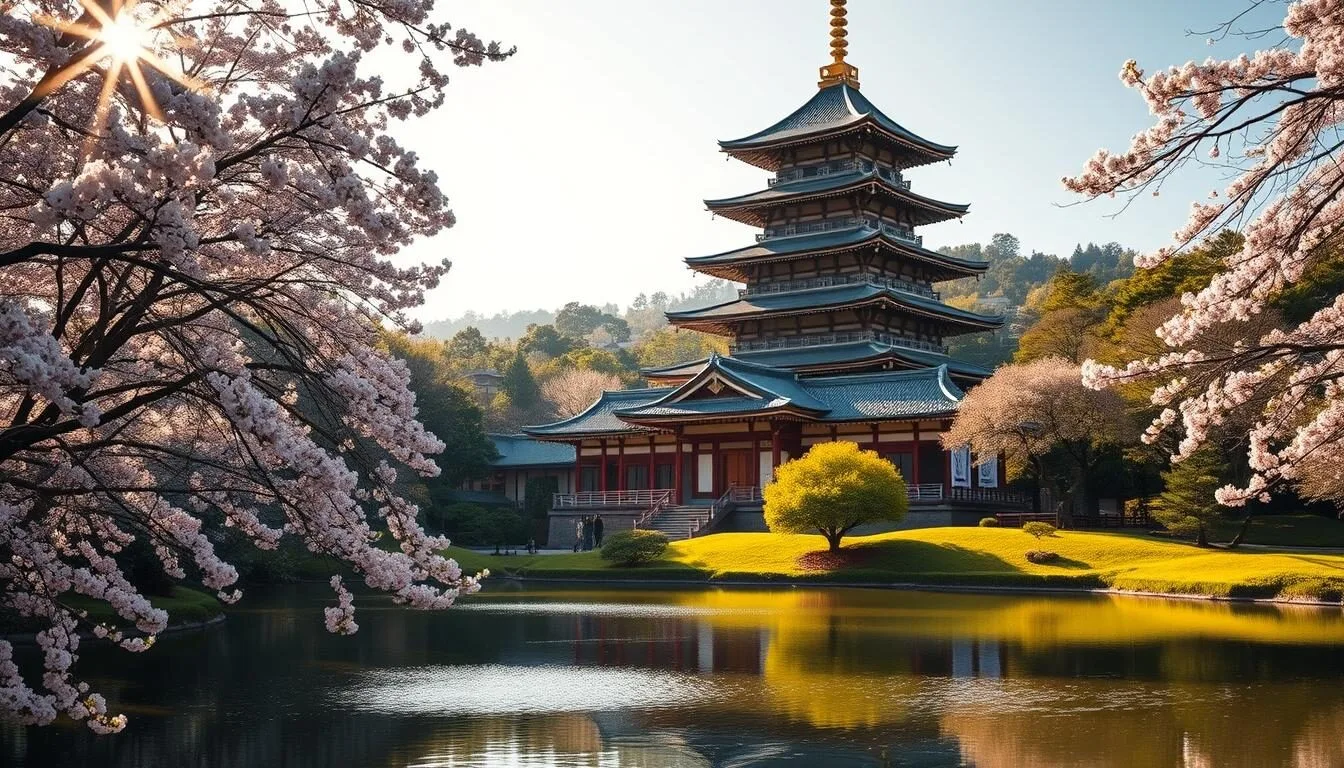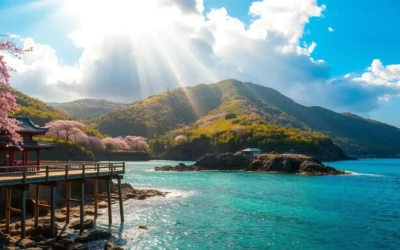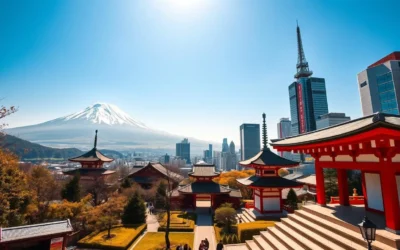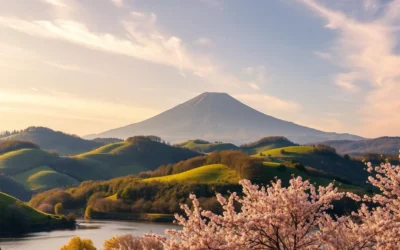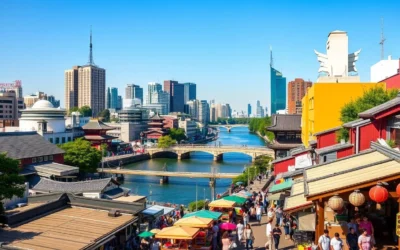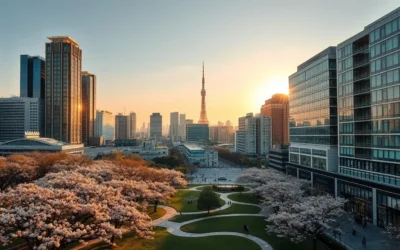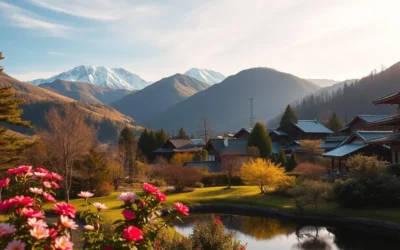As you travel through western Japan, you’ll find that Yamaguchi City is an essential stop between Hiroshima and Kyushu. Renowned for its beautiful temples, this southern city boasts a rich history, including trade with China and contact with Portuguese Jesuits, making it a wealthy center for art and culture.
You’ll discover a perfect blend of historical sites, natural wonders, and cultural experiences without the crowds. The city’s famous temples, such as Rurikoji with its stunning five-storied pagoda, are a must-visit. With its beautiful Zen garden designed by Sesshu, Joeiji is another highlight. Whether you’re interested in spiritual experiences or culinary adventures, this guide will help you plan your perfect adventure.
Discovering the Hidden Gem of Western Japan
For travelers seeking an off-the-beaten-path experience in western Japan, Yamaguchi Prefecture is a hidden gem that promises to captivate and inspire. Located in the westernmost tip of Honshu, this prefecture offers a unique blend of dramatic coastlines, peaceful mountain towns, and a rich cultural heritage.
Yamaguchi Prefecture: Location and Overview
Yamaguchi Prefecture is tucked away in the westernmost tip of Honshu, making it an ideal stop between Hiroshima and Kyushu for travelers exploring western Japan. The prefecture is easily accessible by air or rail, with direct connections from major cities like Osaka, Hiroshima, and Fukuoka via the Sanyo Shinkansen line.
To get to Yamaguchi City, you can take the Sanyo Shinkansen from Hiroshima Station or Hakata Station in Fukuoka to Shin-Yamaguchi Station. Alternatively, you can fly from Tokyo Haneda Airport or Kansai International Airport to Yamaguchi Ube Airport, making it convenient to include in your travel itinerary.
The area’s diverse geography features everything from karst plateaus and limestone caves to serene coastlines and mountain hot springs, giving you plenty of natural wonders to explore. Yamaguchi Prefecture’s rich history as a powerful domain ruled by the Ouchi clan has left it with numerous historical sites and a legacy as a center for art and culture that continues to this day.
Some of the key highlights of Yamaguchi Prefecture include:
- You’ll find Yamaguchi Prefecture tucked away in the westernmost tip of Honshu, making it an ideal stop between Hiroshima and Kyushu for travelers exploring western Japan.
- The prefecture offers a perfect blend of dramatic coastlines, peaceful mountain towns, and rich cultural heritage without the crowds that typically flood more popular Japanese destinations.
- You’ll appreciate how accessible Yamaguchi City is via the Sanyo Shinkansen line, with direct connections from major cities like Osaka, Hiroshima, and Fukuoka making it convenient to include in your itinerary.
- The area’s geography is diverse, featuring everything from karst plateaus and limestone caves to serene coastlines and mountain hot springs, giving you plenty of natural wonders to explore.
- Yamaguchi Prefecture’s rich history as a powerful domain ruled by the Ouchi clan has left it with numerous historical sites and a legacy as a center for art and culture that continues to this day.
With its unique blend of natural beauty, rich history, and cultural heritage, Yamaguchi Prefecture is an ideal destination for travelers looking to explore western Japan. Whether you’re interested in history, nature, or culture, Yamaguchi has something to offer, making it a must-visit destination in your travel guide.
Yamaguchi City, Japan: Best Things to Do – Top Picks
Located in the heart of Western Japan, Yamaguchi City is a treasure trove of historical landmarks, cultural heritage, and natural beauty. As you plan your trip to this captivating city, you’ll find that it’s easily accessible by various modes of transportation.
Planning Your Visit to Yamaguchi City
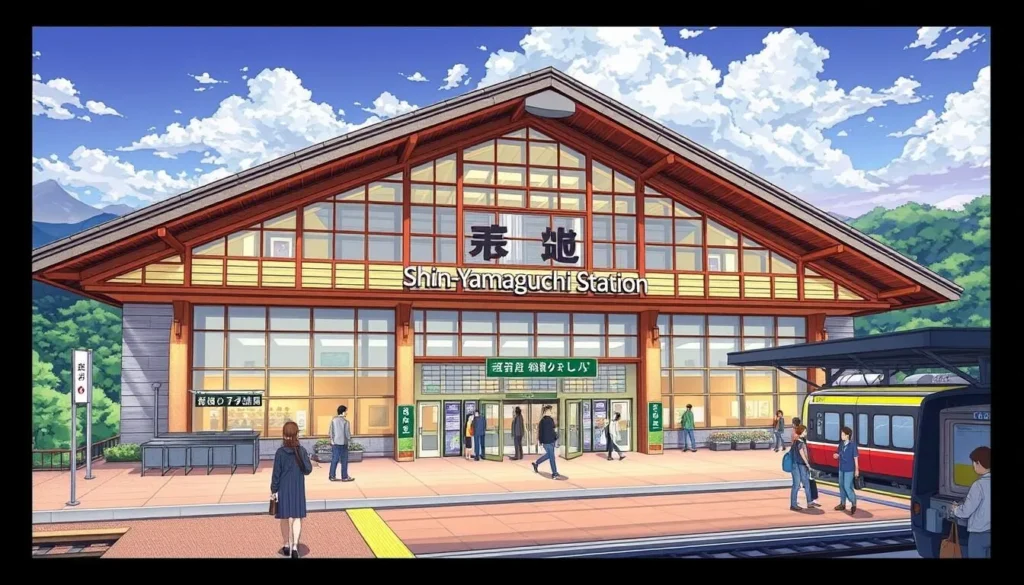
To get to Yamaguchi City, you can take the Sanyo Shinkansen from Hiroshima Station or Hakata Station in Fukuoka to Shin-Yamaguchi Station. Alternatively, you can fly into Yamaguchi Ube Airport from Tokyo Haneda Airport or Kansai International Airport and then take a bus or train to Shin-Yamaguchi Station, which takes around 40 minutes.
When planning your trip, consider allocating at least 2-3 days to fully experience Yamaguchi City and its surrounding attractions. While it’s possible to see the main highlights in a day trip, having more time allows you to explore the city’s temples, cultural sites, and natural wonders without feeling rushed.
Upon arriving at Shin-Yamaguchi Station, you’ll find it convenient to access the city center via local buses or taxis. Most major attractions are within a reasonable distance from each other, making it easy to navigate the city on foot or by local transportation.
Tips for Sightseeing
For the best sightseeing experience, prioritize visiting the city’s famous temples in the morning when the lighting is ideal for photography and the crowds are smaller. Afternoons can be spent exploring other attractions or taking day trips to nearby destinations like Hagi, Akiyoshidai, and Tsunoshima, all of which are accessible by public transportation or rental car.
Having a rental car can provide more flexibility to explore the region’s more remote attractions. However, the city center is compact enough to be navigated on foot or by local bus, making it easy to discover its charms without needing a car.
By planning your visit to Yamaguchi City effectively, you’ll be able to make the most of your trip and enjoy all that this beautiful city has to offer.
Explore Historic Temples and Spiritual Sites
As you wander through Yamaguchi City, you’ll discover a wealth of historic temples and spiritual sites that are sure to captivate your senses. The city’s rich cultural heritage is reflected in its numerous temples, each with its unique history and architectural beauty.
Rurikoji Temple and Its Five-Storied Pagoda
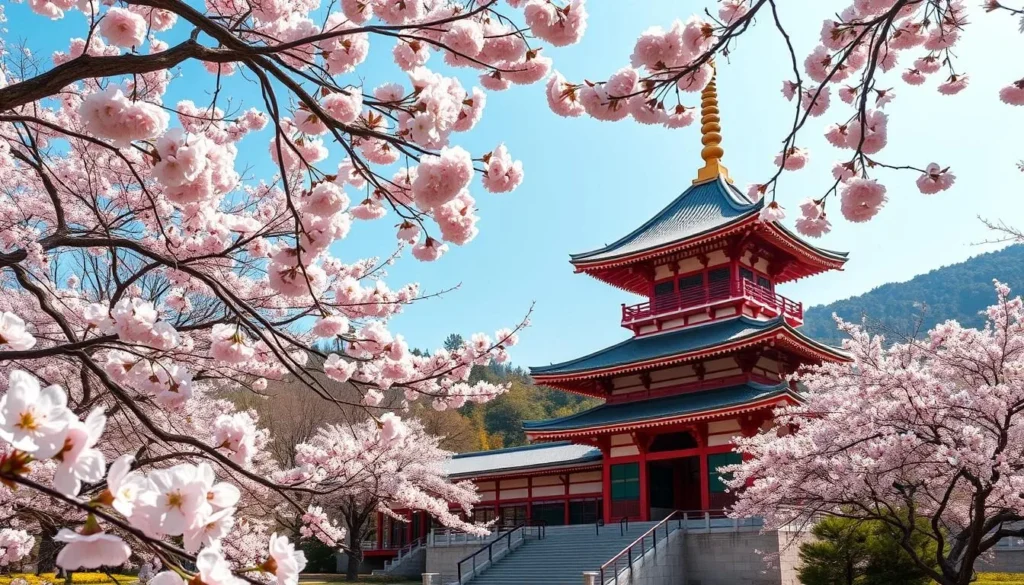
Rurikoji Temple, located in the serene Kozan Park, is one of Yamaguchi City’s most stunning historical sites. The temple is renowned for its five-storied pagoda, considered one of Japan’s three most beautiful pagodas. This National Treasure, dating back over 600 years, is a masterpiece of the Muromachi period, showcasing perfect architectural balance and elegant lines.
The pagoda’s weathered wooden exterior looks incredible in every season. In spring, it’s framed by beautiful cherry blossoms throughout Kozan Park, creating picture-perfect photo opportunities. Autumn brings a different perspective with fiery red and golden leaves transforming the temple grounds.
- You’ll be awestruck by Rurikoji Temple’s five-storied pagoda, considered one of Japan’s three most beautiful pagodas and a designated National Treasure dating back over 600 years.
- When visiting in spring, you’ll be treated to spectacular views of the pagoda framed by cherry blossoms throughout Kozan Park, creating picture-perfect photo opportunities.
- The autumn season transforms the temple grounds with fiery red and golden leaves, offering an equally stunning but different perspective of this historic landmark.
- You’ll appreciate the pagoda’s perfect architectural balance and elegant lines, showcasing the exceptional craftsmanship of the Muromachi period (1336-1573).
- In the evening, you can experience the pagoda in a different light as it’s softly illuminated, creating an almost ethereal atmosphere that highlights its beautiful silhouette against the night sky.
Visiting Rurikoji Temple is a must when in Yamaguchi City, offering a glimpse into Japan’s rich spiritual heritage and architectural excellence.
Natural Wonders of Yamaguchi
In the heart of Yamaguchi lies a treasure trove of natural wonders waiting to be explored. From vast plateaus to serene landscapes, Yamaguchi’s diverse geography offers a unique blend of natural beauty.
Akiyoshidai Plateau: Japan’s Largest Karst Landscape
Akiyoshidai is Japan’s largest karst plateau, presenting a surreal sight to behold. Miles and miles of grassy hills are dotted with pale limestone boulders, some jagged, others worn smooth by time.
The unique landscape of Akiyoshidai was formed over hundreds of millions of years from a coral reef that was slowly pushed inland and up by tectonic forces. Over time, rain and erosion sculpted the land into its current form, creating a rare geological wonder and a designated national park.
Akiyoshidai is especially magical in the early morning when mist hangs low over the hills, giving it a mysterious, dreamlike vibe. This natural beauty changes dramatically with the seasons – vibrant green in summer, golden in autumn, and sometimes dusted with snow in winter, offering a different experience whenever you visit.
- You’ll be amazed by Akiyoshidai Plateau, Japan’s largest karst landscape, where miles of grassy hills are dotted with hundreds of pale limestone formations creating a surreal, otherworldly view.
- The unique landscape was formed over hundreds of millions of years from an ancient coral reef that was pushed inland by tectonic forces, making it a rare geological wonder and now a designated national park.
- You’ll find the plateau especially magical in the early morning when mist hangs low over the hills, giving it a mysterious, dreamlike quality perfect for photography enthusiasts.
- The natural beauty changes dramatically with the seasons – vibrant green in summer, golden in autumn, and sometimes dusted with snow in winter, offering a different experience whenever you visit.
- You can explore the plateau via several walking trails of varying lengths, allowing you to get up close to the limestone formations and enjoy panoramic views across this unique landscape.
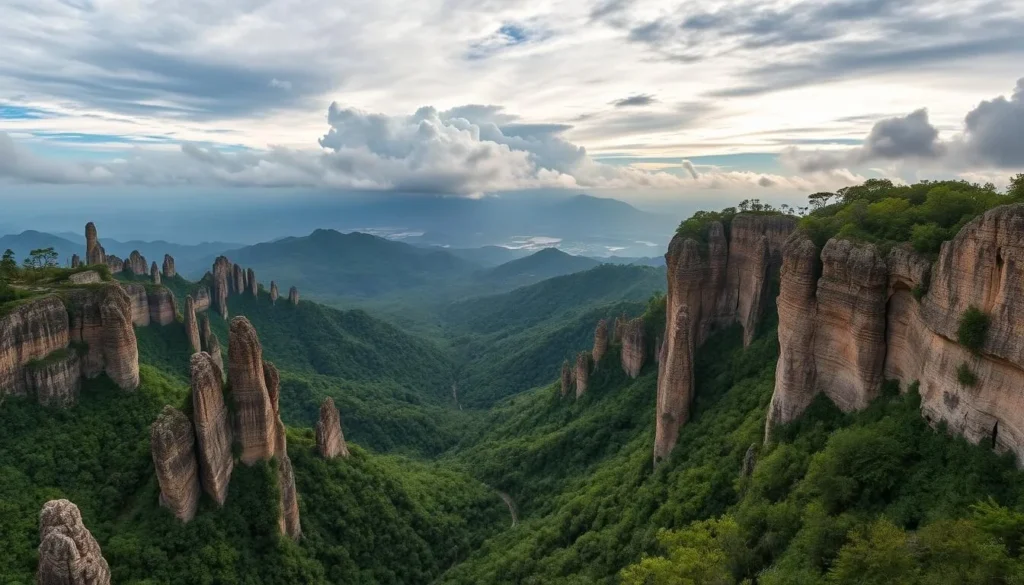
Visiting Akiyoshidai Plateau offers more than just a glimpse into a unique geological formation; it’s an immersive experience into nature at its most breathtaking. The limestone formations stand as sentinels across the grassy hills, a testament to the relentless forces that have shaped this land over millennia.
As you explore the walking trails, the view unfolds, revealing the vast expanse of this karst wonder. Each step offers a new perspective on the beauty of Akiyoshidai, from the intricate patterns on the limestone to the changing colors of the landscape with the seasons.
Akiyoshidai Plateau is not just a natural attraction; it’s a journey into the heart of Yamaguchi’s landscapes, a testament to the region’s unique geological history and natural splendor.
Coastal Treasures and Scenic Bridges
Yamaguchi’s coastline is home to some of Japan’s most breathtaking coastal treasures, including the stunning Tsunoshima Bridge. This picturesque region offers a mix of natural beauty, scenic drives, and historic landmarks that make it a must-visit destination.
Tsunoshima Bridge and Island: Turquoise Waters and White Lighthouse
Stretching gracefully over the crystal-clear waters of the Sea of Japan, Tsunoshima Bridge is one of the most photogenic drives in all of Japan – and honestly, it feels more like Okinawa than Honshu. At 1,780 meters long, this sleek, low-lying bridge connects the mainland to the small island of Tsunoshima and gives you that dreamy, endless-ocean-road vibe that road trip fantasies are made of. What makes this spot so magical is the color of the water – on a sunny day, the sea glows in shades of turquoise and emerald that seem totally unreal.
As you drive across, you’re surrounded by panoramic views of the coastline, the distant lighthouse, and the gentle curve of the road itself. The bridge offers a unique driving experience that is both exhilarating and serene.
The drive across Tsunoshima Bridge rewards you with a breathtaking view of the coastline. The iconic white lighthouse and the gentle curve of the road make it a favorite spot for car commercials and travel photographers.
Key Highlights of Tsunoshima Bridge and Island:
- You’ll be mesmerized by the 1,780-meter Tsunoshima Bridge stretching over crystal-clear turquoise waters, offering one of Japan’s most scenic drives that feels more like Okinawa than mainland Honshu.
- The drive across the bridge rewards you with panoramic views of the coastline, the iconic white lighthouse, and the gentle curve of the road itself, making it a favorite spot for car commercials and travel photographers.
- Once you reach Tsunoshima Island, you can explore the historic white lighthouse, relax on quiet beaches with emerald waters, and enjoy fresh seafood at local restaurants.
- For the best experience, you should visit earlier in the morning or during golden hour when the lighting is perfect for photography and before tour buses arrive in the area.
- This coastal treasure makes for an ideal day trip from Yamaguchi City, allowing you to experience the prefecture’s stunning natural beauty and providing a refreshing contrast to the historical sites in the city center.
Visiting Tsunoshima Bridge is a must-do when in Yamaguchi. The area around the bridge is equally captivating, with its serene beaches and historic landmarks. Whether you’re looking for a relaxing drive or an adventurous trip, Tsunoshima Bridge and Island have something to offer.
As you plan your trip to Yamaguchi, be sure to include Tsunoshima Bridge on your itinerary. The beauty of the area, coupled with its scenic views, makes it an unforgettable experience. Whether you’re driving across the bridge in a car or simply taking in the view, the beauty of Tsunoshima Bridge is sure to leave a lasting impression.
Relaxing in Yamaguchi’s Hot Springs
Yamaguchi City is a haven for those seeking relaxation, with its numerous hot springs being a major draw. The city’s hot spring culture is deeply rooted in its history and is an integral part of its identity.
Yuda Onsen: The Heart of Yamaguchi’s Hot Spring Culture
Located a short walk from Yuda Onsen Station, this hot spring district is one of the most popular areas in Yamaguchi City. For the overnight traveler, there are a wide variety of onsen ryokan hotels to choose from. If you’re just in town for the day, enjoy relaxing in one of the many day-trip onsen. Ashi-yu onsen foot baths also dot the Yuda Onsen district, allowing you to take a break from sightseeing to soak your feet and get refreshed.
Legend has it that this onsen was discovered when an injured white fox bathed its leg in the waters and was miraculously healed. The white fox is the sacred guardian spirit of Yuda Onsen, and a huge statue of a towering white fox greets you with its benevolent smile outside Yuda Onsen Station.
You’ll find Yuda Onsen conveniently located in the heart of Yamaguchi City, making it the perfect place to relax after a day of sightseeing with its numerous hot spring facilities. The district offers a range of bathing options to suit your schedule – from full-service ryokan experiences for overnight stays to public baths and even free foot baths scattered throughout the area for quick rejuvenation.
The mineral-rich waters of Yuda Onsen are known for their therapeutic properties, particularly beneficial for skin conditions and muscle fatigue, giving you a perfect opportunity to experience an authentic part of Japanese culture. While exploring the district, you can also enjoy the lively atmosphere with shops, restaurants serving local specialties like kawara soba, and the charming sight of visitors in yukata (light cotton kimono) strolling between baths and accommodations.
Some of the top ryokans in Yuda Onsen include those that offer luxurious bathing facilities and traditional Japanese cuisine. When visiting Yuda Onsen, be sure to try some of the local delicacies and take a stroll around the district to fully immerse yourself in the hot spring culture.
Historical Sites and Cultural Heritage
Discover the historical treasures of Yamaguchi, where every site tells a story of the prefecture’s history and culture. Yamaguchi is home to numerous historical landmarks that reflect its rich heritage, from feudal castles to ancient temples.
Iwakuni Castle and Kikko Park
Iwakuni Castle is a must-visit historical site in Yamaguchi, perched on top of Mount Shiroyama and overlooking the Nishiki River and the city of Iwakuni. Originally built in the early 1600s, the castle was demolished under shogunate orders but was beautifully reconstructed in the 1960s.
The castle’s commanding position atop Mount Shiroyama offers panoramic views of the surrounding landscape, illustrating why this strategic location was chosen by the Kikkawa clan. You can reach the castle by hiking up through forest trails or taking a scenic ropeway that glides over the treetops.
- You’ll be impressed by Iwakuni Castle’s commanding position atop Mount Shiroyama, offering panoramic views of the Nishiki River and surrounding landscape.
- The reconstructed castle provides insight into feudal Japan’s castle architecture and defensive design.
- You have options for reaching the castle, including hiking or taking the scenic ropeway.
- Inside the castle, a small museum displays samurai armor, weapons, and historical artifacts related to the Kikkawa clan.
- After exploring the castle, you can wander through Kikko Park, which features beautiful gardens, historic buildings, and cherry trees that bloom spectacularly in spring.
The Kikkawa clan played a significant role in the history of Iwakuni, and their legacy is still evident in the castle and its surrounding park. The castle’s museum offers a glimpse into the clan’s history and influence on the region.
Visiting Iwakuni Castle is a journey through history, with its reconstructed architecture and beautifully maintained surroundings. The castle’s view from the top is breathtaking, making it a must-visit attraction in Yamaguchi. In the spring, the cherry blossoms in Kikko Park add to the castle’s beauty, creating a picturesque scene.
Unique Spiritual Experiences
In the quiet hills of Nagato lies a shrine that embodies the essence of Japan’s spiritual heritage. Yamaguchi Prefecture is dotted with historical and spiritual sites, but Nagato Toyokawa-inari Shrine stands out for its serene and authentic experience.
Nagato Toyokawa-inari Shrine and Its Fox Statues
Tucked away in the quiet hills of Nagato, Nagato Toyokawa-inari Shrine is a peaceful spot that often flies under the radar, making it all the more special. Dedicated to Inari, the Shinto deity of agriculture, business, and prosperity, this shrine is instantly recognizable by its long, winding path of red torii gates, flanked by dozens of stone fox statues.
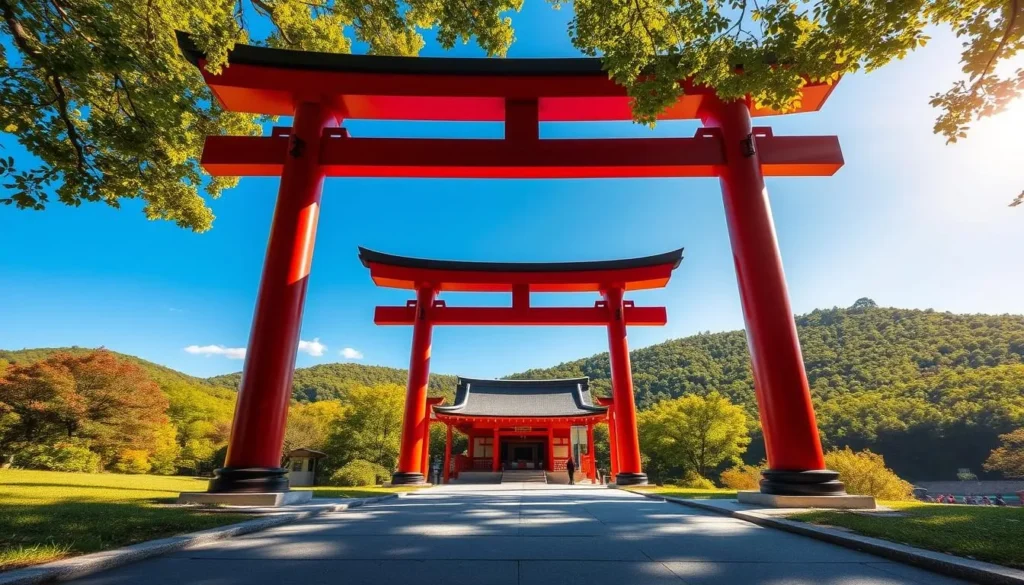
The fox, or kitsune, is believed to be Inari’s messenger, and you’ll see plenty of them here, each with its own unique expression. Some are fierce, some are playful, and some are a bit mysterious – they all add to the shrine’s slightly magical, quietly powerful atmosphere. As you walk through the gates, you’ll discover a peaceful spiritual experience that offers a more authentic, less-crowded alternative to famous Inari shrines elsewhere in Japan.
The serene forest setting enhances the shrine’s magical atmosphere, especially in the early morning or late afternoon when light filters through the trees and gates in an enchanting way. Unlike more commercialized temple and shrine experiences, this hidden gem allows you to connect more deeply with Japanese spiritual traditions in a contemplative environment away from tourist crowds.
Visiting Nagato Toyokawa-inari Shrine provides a unique experience that combines natural beauty with spiritual significance. You’ll learn about the significance of foxes in Japanese spiritual tradition as messengers of Inari, adding cultural context to your visit. As you explore the shrine, take a moment to appreciate the intricate details of the temple architecture and the vibrant red of the torii gates.
- Discover a peaceful spiritual experience at Nagato Toyokawa-inari Shrine, tucked away in the quiet hills.
- Explore the winding path of vermillion torii gates flanked by dozens of stone fox statues.
- Learn about the cultural significance of foxes as messengers of Inari.
Scenic Natural Landscapes
Scenic natural landscapes abound in Yamaguchi, showcasing Japan’s natural splendor. The prefecture is endowed with diverse geography, from mountains to coastlines, offering numerous breathtaking views.
Higashi Ushitobata Rice Terraces: Reflective Beauty
Hidden away in the hills of Nagato, Higashi Ushitobata Rice Terraces offer one of the most peaceful and poetic views in Yamaguchi. These beautifully layered fields roll down towards the coastline, reflecting the sky and sea in a way that almost makes them look like glass.
You’ll be captivated by the Higashi Ushitobata Rice Terraces, where beautifully layered fields cascade down toward the coastline, creating one of Yamaguchi’s most peaceful and photogenic landscapes. The terraces offer a constantly changing view throughout the seasons.
- The terraces are flooded in spring and early summer, creating mirror-like reflections of the sky and clouds.
- Summer brings lush green growth, while autumn transforms the fields into waves of gold.
- The most magical time to visit is during the “golden hour” before sunset.
- This spot showcases the harmonious relationship between Japanese agriculture and nature.
- Unlike more famous rice terraces in Japan, this hidden gem remains relatively uncrowded.
The Higashi Ushitobata Rice Terraces are a testament to the beauty of rural Japan, where agriculture and nature blend seamlessly. As you explore these terraces, you’ll find that they offer a serene atmosphere, perfect for reflection and appreciation of natural beauty.
Local Cuisine and Dining Experiences
When visiting Yamaguchi City, you can’t miss the opportunity to indulge in its unique local cuisine, shaped by centuries of history and geography. Yamaguchi’s culinary scene is a reflection of its rich cultural heritage and its strategic location, surrounded by sea on three sides.
Must-Try Yamaguchi Specialties: Fugu and Kawara Soba
Yamaguchi is renowned for its seafood, particularly fugu (pufferfish), a local delicacy that is both thrilling and delicious when prepared correctly by licensed chefs. You’ll have the chance to savor this prized fish served with spring onions and spicy sauce, offering a unique dining experience. Another specialty not to be missed is kawara soba, a traditional green soba served sizzling hot on a large roof tile, accompanied by thinly sliced beef, egg, and citrus, creating a distinctive flavor profile.
The food culture in Yamaguchi reflects its history, with influences from centuries of trade with China and other regions visible in local cooking techniques and flavor combinations. For the best dining experiences, look for restaurants around the Yuda Onsen district, where you can combine a relaxing hot spring visit with sampling authentic local cuisine in a traditional atmosphere.
Top Recommendations:
- Sample fugu, Yamaguchi’s famous local delicacy, prepared by licensed chefs.
- Try kawara soba, a Yamaguchi specialty with green tea-infused noodles served sizzling hot on a roof tile.
- Enjoy fresh seafood throughout Yamaguchi City, thanks to its location surrounded by water on three sides.
- Explore the food culture in Yamaguchi, reflecting its rich history and trade influences.
- Visit restaurants around Yuda Onsen for a relaxing hot spring experience combined with local cuisine.
Yamaguchi City offers a culinary journey that is both authentic and exciting, with its local cuisine being a significant part of the travel experience. Whether you’re a food enthusiast or just looking to try something new, Yamaguchi’s dining scene has something to offer.
Seasonal Festivals and Events
As the seasons change, Yamaguchi City comes alive with a variety of festivals and events that are worth experiencing. The city’s cultural calendar is filled with exciting activities that reflect its rich heritage and natural beauty.
Otozure River Light and Sound Festival
One of the standout events is the Otozure River Light and Sound Festival, a month-long celebration that takes place along the riverbanks. The festival features artistic light installations, music, and poetry readings, creating a mesmerizing atmosphere. It’s a perfect spot to unwind and soak in the beauty of the season.
One of the most enchanting aspects is how the festival transforms historical landmarks. For example, the nearby shrine becomes a focal point, with its architecture illuminated in soft, warm hues. The iconic five-storied pagoda also takes on a new persona, its silhouette glowing against the night sky.
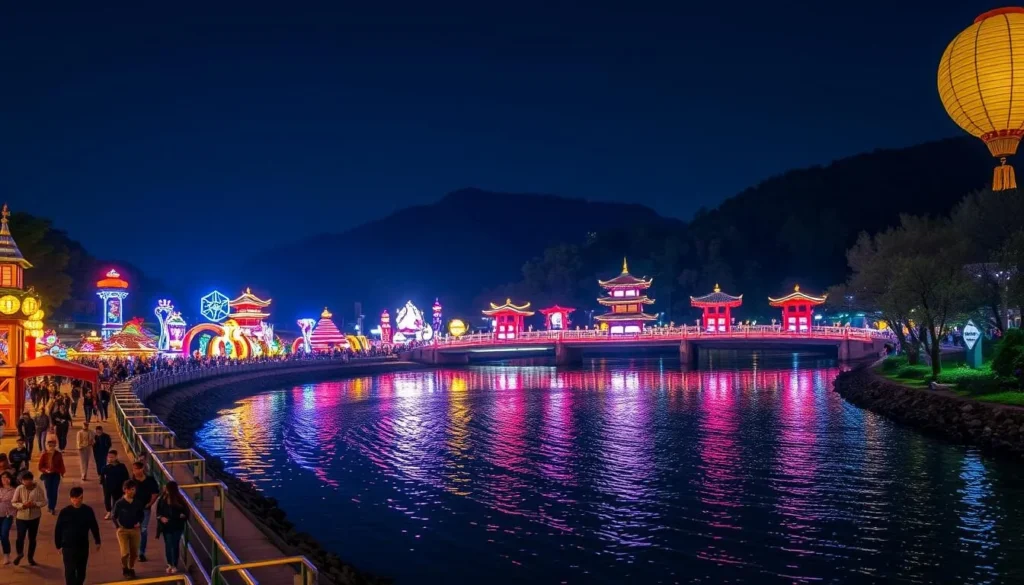
You’ll be enchanted by the Otozure River Light and Sound Festival, featuring artistic light installations, music performances, and poetry readings along the riverbanks of Yamaguchi City. The festival is a great way to experience the city’s cultural heritage and natural beauty.
Other Seasonal Highlights
During cherry blossom season (late March to early April), you can experience hanami (flower viewing) parties along the Ichinosaka River where approximately 200 cherry trees create a stunning pink tunnel of blossoms.
The autumn leaves season (mid-November to early December) transforms Yamaguchi’s temples and parks with vibrant red and gold foliage, particularly beautiful at Rurikoji Temple and Kozan Park.
| Season | Festival/Event | Highlights |
|---|---|---|
| Spring | Cherry Blossom Festival | Hanami parties, 200 cherry trees |
| Autumn | Autumn Leaves Viewing | Vibrant foliage at Rurikoji Temple and Kozan Park |
| Winter | Otozure River Light and Sound Festival | Artistic light installations, music, and poetry readings |
You’ll notice how seasonal festivals often incorporate Yamaguchi’s historical landmarks, with special illuminations highlighting the five-storied pagoda and other cultural treasures against the night sky. Each season brings its own special events and atmosphere to Yamaguchi City, from summer festivals with traditional dancing to winter illuminations, making any time a good time to visit with unique experiences available year-round.
Day Trips from Yamaguchi City
Hagi, a charming castle town located about 1.5 hours from Yamaguchi City, is an ideal destination for a day trip filled with history and tradition. You can easily make this trip by bus or train, enjoying the scenic views along the way.
Hagi: Historic Castle Town and Samurai District
One of the highlights of Hagi is the Kikuya Residence, a 400-year-old masterpiece of traditional architecture that served as the honjin for Tokugawa government inspectors during the Edo Era. You’ll step back in time exploring Hagi’s samurai district, with its white-walled residences, earthen walls, and narrow streets that once housed the warrior class who served the powerful Mori clan.
The Kikuya Residence offers a glimpse into 400-year-old traditional architecture, showcasing the refined lifestyle of wealthy merchants during the Edo period. At Hagi Meirin Gakusha, you’ll discover a historic wooden schoolhouse built for samurai sons, with interactive exhibits that bring to life the rigorous education system that shaped Japan’s future leaders.
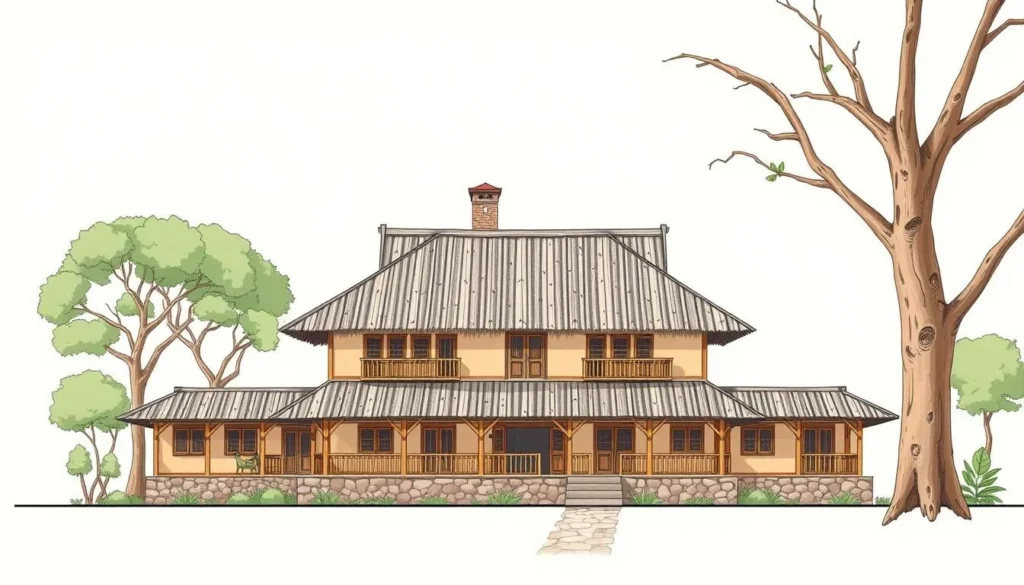
- You can easily make a day trip to Hagi, a beautifully preserved castle town about 1.5 hours from Yamaguchi City by bus or train, where the street layout and many buildings remain unchanged since the feudal era.
- You’ll explore Hagi’s samurai district, with its white-walled residences, earthen walls, and narrow streets that once housed the warrior class who served the powerful Mori clan.
- The Kikuya Residence offers a glimpse into 400-year-old traditional architecture that once served as lodging for Tokugawa government inspectors, showcasing the refined lifestyle of wealthy merchants during the Edo period.
- At Hagi Meirin Gakusha, you’ll discover a historic wooden schoolhouse built for samurai sons, with interactive exhibits that bring to life the rigorous education system that shaped Japan’s future leaders.
- A day in Hagi also allows you to explore the town’s famous pottery tradition, with numerous workshops and galleries showcasing Hagi-yaki ceramics, known for their subtle colors and textures that change over time with use.
To get to Hagi from Yamaguchi, you can take a bus or train, enjoying the scenic views during the approximately 1.5-hour journey. This historic town is a treasure trove of history, with its well-preserved castle and samurai district offering a unique glimpse into Japan’s feudal past. Spending a day in Hagi allows you to fully immerse yourself in the town’s traditional atmosphere and explore its many historical sites.
Off-the-Beaten-Path Attractions
The true essence of Yamaguchi lies in its hidden corners, where history and nature entwine. As you explore this beautiful region, you’ll discover that there’s more to it than the popular tourist spots. Yamaguchi is home to numerous secret areas that are waiting to be discovered by travelers who are willing to take a walk off the beaten path.
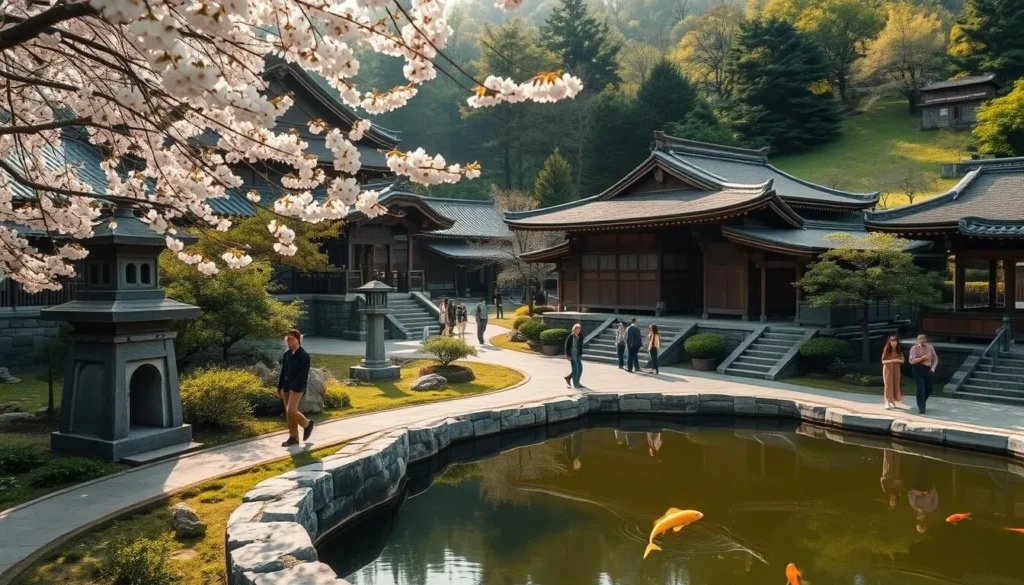
Hidden Gems Only Locals Know About
One of the most intriguing things to explore is the hidden cemeteries tucked behind ancient temples. These quiet spaces, marked by stone lanterns and torii gates, offer a glimpse into the region’s spiritual heritage. Walking through them feels like stepping into a different era. In Nagato, you’ll find a cemetery that’s both mysterious and beautiful, with a peaceful atmosphere and scenic surroundings that make it a perfect spot for reflection.
Local residents might direct you to secluded gardens near historic shrines, where you can enjoy lush greenery and traditional landscaping elements without the crowds found at more famous sites. A peaceful walk through the lesser-known temple areas in the outskirts of Yamaguchi City will reward you with authentic spiritual spaces where you might be the only visitor, allowing for genuine moments of reflection.
- Discover hidden temple cemeteries throughout Yamaguchi, particularly behind Tokoji Temple, where stone lanterns and moss-covered graves create a hauntingly beautiful atmosphere rarely mentioned in travel guides.
- Explore secluded gardens near historic shrines, enjoying lush greenery and traditional landscaping elements without the crowds.
- Take a peaceful walk through lesser-known temple areas in the outskirts of Yamaguchi City for authentic spiritual experiences.
- Find that many of these hidden gems showcase a different kind of beauty – one that’s more subtle and contemplative than grand tourist attractions.
- Experience a more authentic connection to the area by exploring off-the-beaten-path locations, often leading to chance encounters with friendly locals.
| Attraction | Location | Description |
|---|---|---|
| Tokoji Temple Cemetery | Yamaguchi City | A hauntingly beautiful cemetery with stone lanterns and moss-covered graves. |
| Nagato Cemetery | Nagato | A mysterious and beautiful cemetery perfect for reflection. |
| Secluded Garden near Historic Shrine | Outskirts of Yamaguchi City | Lush greenery and traditional landscaping elements in a serene setting. |
Exploring these off-the-beaten-path locations not only gives you a deeper understanding of Yamaguchi’s culture and history but also allows you to experience the area’s beauty in a more personal way. As you travel through Yamaguchi, remember to keep an eye out for these hidden gems, and you’ll surely have a more enriching travel experience.
Where to Stay in Yamaguchi
As you plan your visit to Yamaguchi, selecting the ideal accommodation is key to enjoying all that the city has to offer. Yamaguchi City provides a diverse range of accommodations, from traditional ryokans to modern hotels, ensuring that every traveler finds a suitable place to stay.
Traditional Ryokans: Authentic Japanese Experience
Japanese-style hotels and ryokans are a standout choice for accommodations in Yamaguchi. These traditional inns are designed to reflect the history and culture of the area, offering a unique glimpse into traditional living. Many are nestled in scenic locations, surrounded by mountain views or close to the sea, making them perfect for relaxation.
Staying in a ryokan is more than just a place to sleep—it’s an experience. These traditional inns often feature tatami mat floors, futon bedding, and communal baths. You’ll feel like you’re stepping into a home that’s steeped in history and warmth. Many ryokans also offer onsen facilities, which are natural hot springs known for their therapeutic benefits.
- You’ll find that staying in a traditional ryokan in Yamaguchi offers much more than just accommodation – it’s a complete cultural experience with tatami mat floors, sliding paper doors, and futon bedding laid out each evening by attentive staff.
- Many ryokans in the area feature their own private onsen (hot spring baths), allowing you to enjoy the therapeutic mineral waters in a more intimate setting than public bath houses.
- The ryokan experience typically includes kaiseki dining – multi-course meals featuring local, seasonal ingredients prepared with artistic presentation that showcase Yamaguchi’s culinary traditions.
- You’ll appreciate the attentive hospitality (omotenashi) that characterizes ryokan stays, where staff anticipate your needs and ensure every aspect of your visit is comfortable and authentic.
- For those seeking modern comforts alongside traditional elements, Yamaguchi also offers contemporary hotels and boutique accommodations, particularly around Yuda Onsen and near Shin-Yamaguchi Station.
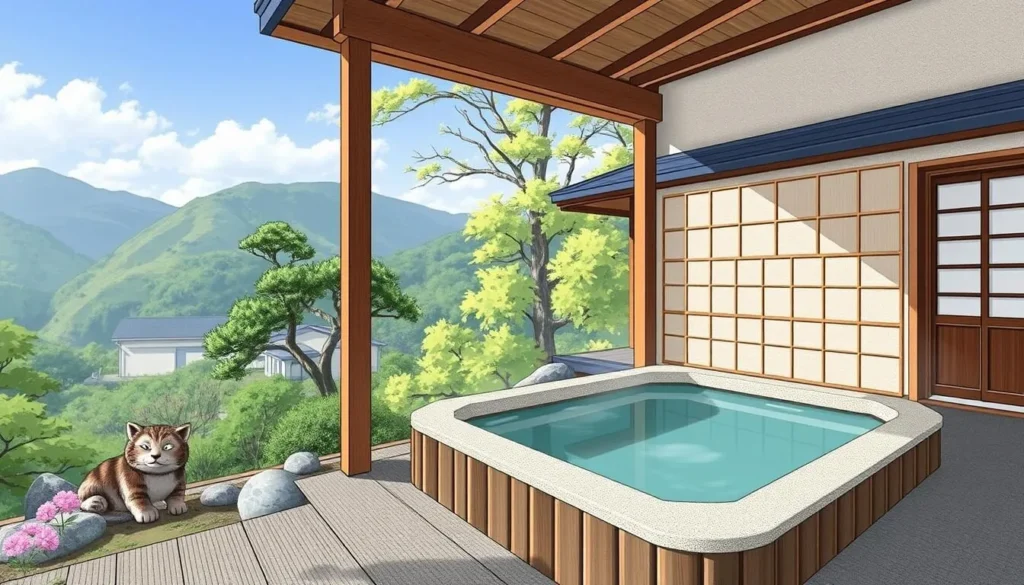
In addition to traditional ryokans, Yamaguchi City offers a variety of other accommodations to suit different preferences. Whether you’re looking for a luxurious stay or a budget-friendly option, you’ll find it in Yamaguchi.
The city’s accommodations are not just places to rest; they are gateways to experiencing the rich culture and natural beauty of Yamaguchi. By choosing the right place to stay, you can enhance your travel experience and create lasting memories.
Practical Travel Tips for Yamaguchi
As you plan your trip to Yamaguchi, understanding the transportation options available will greatly enhance your travel experience. Yamaguchi City is a hidden gem in Western Japan, offering a mix of historical sites, natural wonders, and cultural experiences that are worth exploring.
Getting Around: Transportation Options
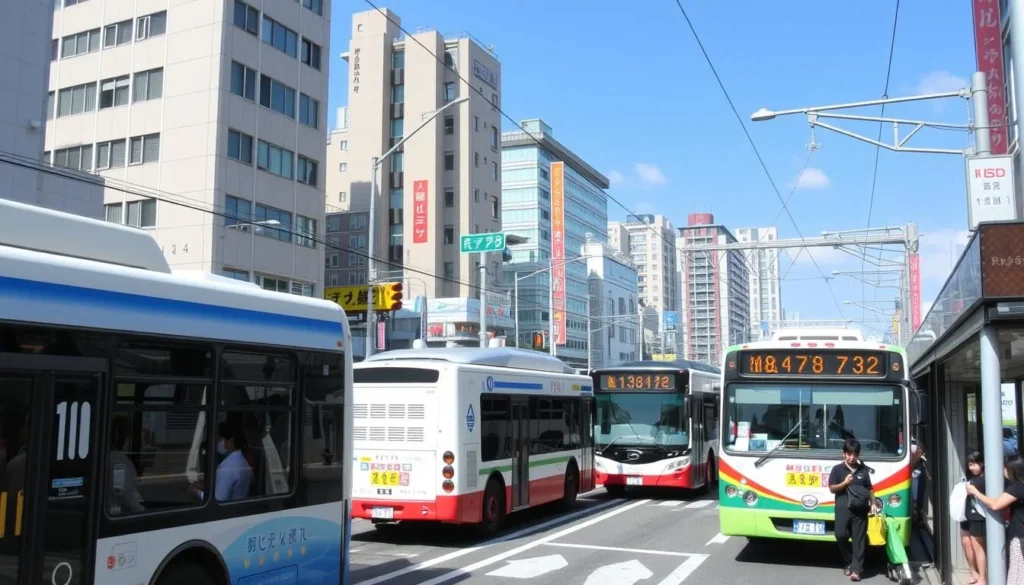
To navigate Yamaguchi effectively, you have several transportation options. Renting a car provides the most flexibility, especially for exploring rural areas and coastal attractions like Tsunoshima Bridge, which have limited public transportation.
- Renting a Car: Offers flexibility for exploring Yamaguchi Prefecture, especially rural areas.
- Public Transportation: Includes trains and buses, suitable for those who prefer not to drive.
- JR Rail Pass: A cost-effective option for travelers visiting multiple destinations in Japan, including Yamaguchi.
- Local Bus Network: Sufficient for exploring Yamaguchi City, with many attractions within walking distance.
- Organized Tours: A convenient option for day trips to places like Hagi, Akiyoshidai, or coastal areas without a car.
For your day trips, consider the schedules of trains and buses in advance, as they may be less frequent than in major cities. The JR Rail Pass is particularly useful if your travel itinerary includes other destinations in Japan, covering the Shinkansen to Shin-Yamaguchi Station and local JR lines.
When exploring the area around Yamaguchi City, having a car can be beneficial. However, for the city itself, the local bus network is sufficient, and many key attractions are within walking distance of each other in the central area.
Planning your trip to Yamaguchi involves considering the transportation options that best suit your needs. Whether you prefer the flexibility of a car or the convenience of public transportation, understanding your options will make your travel experience smoother and more enjoyable.
Conclusion: Why Yamaguchi Should Be Your Next Japanese Adventure
For those looking to experience Japan beyond the bustling cities, Yamaguchi Prefecture presents an opportunity to discover the authentic heart of the country. As you plan your trip, you’ll find that Yamaguchi City offers the perfect balance of Japan’s highlights – historic temples with stunning five-storied pagodas, natural wonders like limestone caves, relaxing hot springs, and delicious local cuisine – all without the overwhelming crowds of more famous destinations.
The changing seasons bring different charms to Yamaguchi: spring fills the area with cherry blossoms around temples and rivers, summer offers lush green landscapes and festivals, autumn transforms the region with vibrant red and gold autumn leaves, and winter provides a peaceful atmosphere with occasional snow. Whether you’re driving between coastal views in a rental car, walking through temple gardens, or soaking in healing onsen waters, Yamaguchi offers diverse experiences that appeal to nature lovers, history buffs, and culinary enthusiasts alike.
Your trip to Yamaguchi Prefecture allows you to experience authentic Japanese culture and heritage that has been preserved through time, from samurai clan history to traditional arts and crafts that continue to this day. As you explore the area, you’ll discover historic temples, scenic natural landscapes, and traditional Japanese gardens that showcase the region’s beauty and heritage.
By choosing Yamaguchi for your next Japanese adventure, you’ll gain a deeper appreciation for the country beyond its famous cities, discovering the authentic heart of Japan in a region where tradition and natural beauty create unforgettable travel memories. With its rich history, diverse landscapes, and warm hospitality, Yamaguchi City is an ideal destination for travelers seeking a unique and enriching experience.
As you conclude your journey through Yamaguchi, you’ll carry with you memories of the region’s stunning cherry blossoms, serene temple grounds, and relaxing onsen experiences. Whether you’re looking to return to Japan or simply seeking a new destination for your next trip, Yamaguchi City and Yamaguchi Prefecture are sure to leave a lasting impression, inviting you to return and explore more of their hidden gems.
